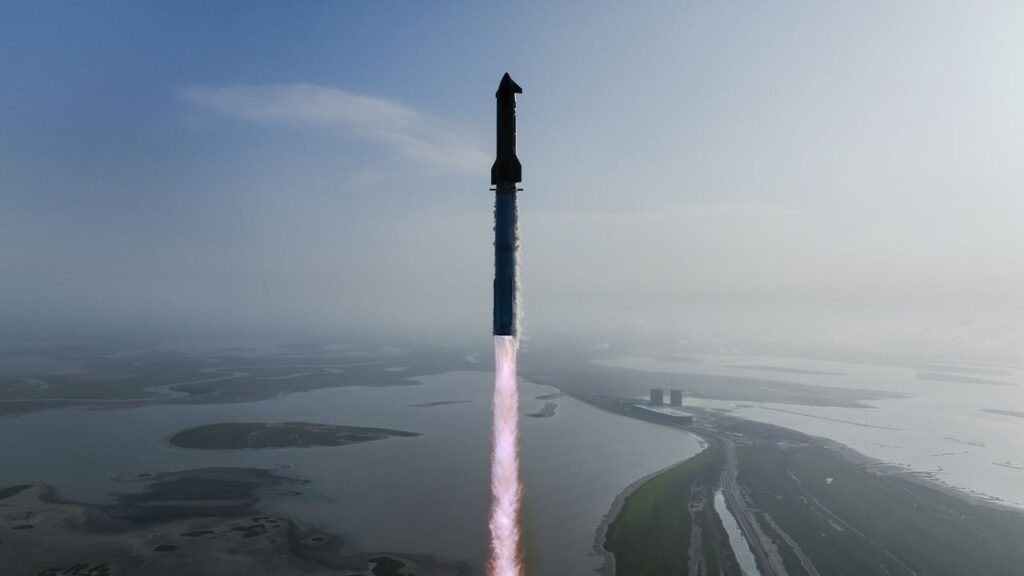
SpaceX has announced that it is preparing to launch the 10th integrated test flight of its Super Heavy Starship launch vehicle on August 24, 2025. Liftoff is scheduled to occur from the company’s Starbase facility in Texas, with the launch window opening at 7:30 p.m. EDT (23:30 GMT). This date was confirmed on social media platform X on August 15, slightly later than the timeline suggested by SpaceX CEO Elon Musk in mid-July.
This upcoming test flight marks a pivotal moment in the development of the Starship program. Following three previous flights this year, which ended in the loss of the upper stage, the pressure is mounting to refine the vehicle ahead of its intended role as the lunar lander for NASA’s Artemis 3 mission, currently slated for 2027. The fully stacked configuration of the Super Heavy booster and the Starship upper stage stands at an impressive 394 feet (120 metersFlight Details and Objectives
Flight 10 will utilize Booster 16 and Ship 37, both designated as Block 2 variants of the evolving launch vehicle. Each mission aims to incorporate incremental upgrades, improving upon the previous tests. This flight follows Flight 9, which took place on May 27 and resulted in the upper stage breaking apart approximately 45 minutes into its flight. A significant setback occurred on June 18, when a static test fire at Starbase resulted in an explosion, destroying Ship 36, which was originally scheduled for Flight 10. This incident also caused damage to SpaceX’s testing infrastructure. After completing investigations into those mishaps, the team is now preparing for Flight 10 with clear mission objectives. Once in space, after the separation of stages, Starship will deploy eight mass simulators for its Starlink satellites. Furthermore, it will conduct an in-space relight of its Raptor engines and attempt a controlled splashdown in the Indian Ocean. Booster 16 will follow a different trajectory, aiming for a controlled splashdown in the Gulf of Mexico. Of the nine Starship test flights conducted to date, several have demonstrated partial successes, including the recovery of a Super Heavy booster using the launch tower’s “Mechazilla” chopstick arms. However, none have yet accomplished all mission objectives from launch through landing. SpaceX is committed to advancing the Starship program as part of Elon Musk‘s broader vision of making human life multiplanetary, with aspirations to send people to Mars. Additionally, Starship plays a crucial role in NASA’s Artemis program, which aims to return astronauts to the moon for extended missions. As the countdown to August 24 begins, the focus remains on achieving a successful test flight, crucial for the future of space exploration and the ambitions of both SpaceX and NASA.Future Aspirations and Challenges







